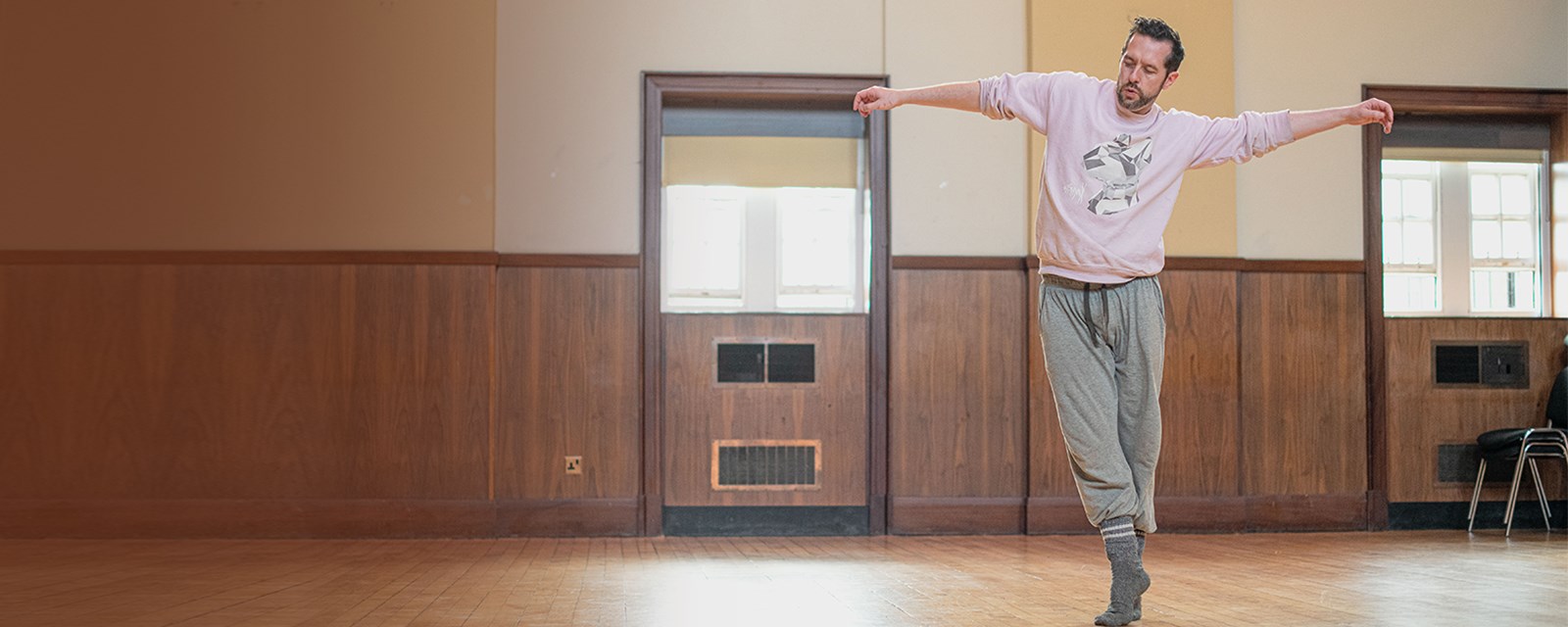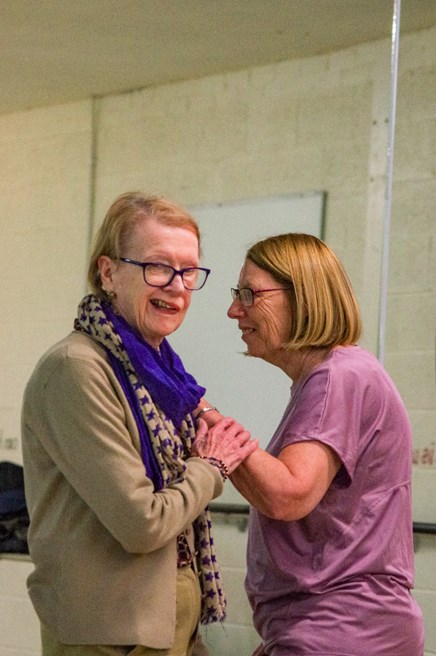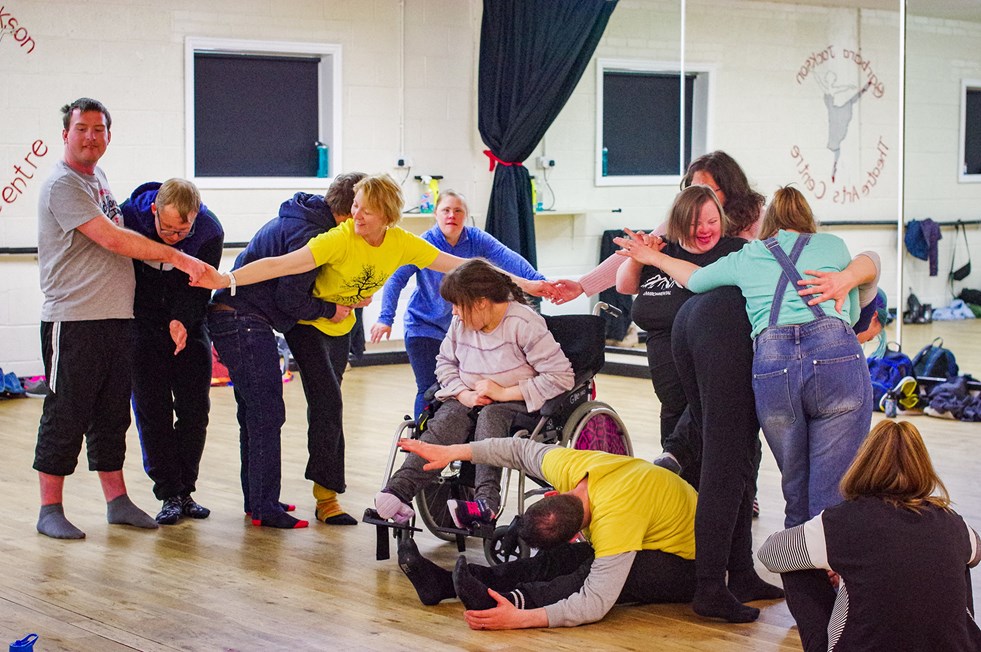
This much I’ve learnt: George Adams
Choreographer, dance movement psychotherapist and yoga therapist George Adams is co-founder of LPM Dance, an artist-led charity working with people living with long term health conditions and disabilities to improve both symptoms and quality of life. Mr Adams is a member of the Royal Society of Medicine and is based in Lancashire.
Working on performance projects with young people to explore physical development and play led me to further investigate dance as a therapy.
I trained at the Rambert School of Ballet and Contemporary Dance in London and worked as a repertoire dancer and choreographer for a number of years before moving into the field of dance within education.
Working with young people and studying the relationship between play and development led me to a Post Graduate Certificate in dance movement psychotherapy at Edge Hill University. I focused on phenomenology, pain and perception, exploring the therapeutic relationship between touch and the therapist.
For dementia patients especially, touch and being held is important, since so often touch is associated with being cared for.
We’re starting to find out more about the benefits to our wellbeing of being held or being touched, particularly for people later on in life or with dementia.

Touch and being held is important
In dance we can form empathetic relationships quite quickly. We’re sharing the space, we’re using touch, we’re communicating and problem solving. It can be a visceral connection that so many of us have missed, especially after the pandemic.
Our dance and health hubs work to support populations living in areas where there is low engagement in activities which support health and wellbeing.
We work with national charities such as Parkinson’s UK to promote our dance and health hubs through local GP surgeries, and also with local authorities on initiatives like Healthier Fleetwood, which supports residents to improve their physical and mental health.
Social prescribing helps us link with more people with long term conditions or who need support with their mental health.
We place community at the heart of our work.
Our aim is to bring dance to public spaces such as libraries, museums and parks, helping to build cultural capital for people who wouldn’t otherwise experience dance in a theatre.

Creating a dance space for everyone
We all have a birthright to movement, dance and music. If we can create a space for dance for everyone, we think that will create a better world.
We believe that dance is for all and try to create access for everyone to be involved, irrespective of their gender, disability or socio-demographic situation. Dance has the ability to connect us, regardless of our differences.
Collaboration is vital – with the community, with clinicians and with musicians and other dancers and artists.
A recent research project we were involved in looked at the effect of live music on people living with Parkinson’s. Musicians joined our dance and movement classes, enabling our dancers to form new relationships with the artists and become more involved with the creative process. We were interested in finding out if being involved with the creation of live music, rather than recorded music, had any effect on symptoms, or whether they had a more visceral experience.
We’re hoping the next phase of this research will involve neurologists examining the effect of music on the brain.
People join our sessions not to talk about their symptoms or to form a support group, but to experience a shared purpose and become involved in a creative process.
People are referred to our Parkinson’s sessions to improve their balance and coordination, which can help prevent falls and support motor control. Dance and movement can also help with facial movements and expression. When people join our sessions, they’re in a safe space where everyone understands and empathises. There’s a shared goal and purpose, which is to dance.
It’s important for care givers and family affected by a dementia patient’s condition to see the person they’re caring for experiencing a moment of joy.
There can be a lot of fear among people with dementia, depending on the type of dementia they have and the type of degeneration that’s happening in the brain. When we create performance projects for this group of people, we try to create an environment that is responsive, safe and creative.
For this group, it is about being a part of society again and being accepted, with the dancers and artists creating a social experience inspired by what the participant offers in the moment. Many times I’ve heard care givers say to me that they’ve never seen their relative as confident as when they were taking part in a dance performance.
For me, this is the true benefit because it’s giving someone quality of life, sometimes at their darkest moments.
We believe dance is pretty much the best exercise you can do.
As well as the physical and social aspects of dance, there is scientific evidence showing that dance supports the brain and the functioning of the body in certain ways. While the psychological benefits of dance can be difficult to quantify, they centre around feeling a union of place and sense of self.
Amongst the general population there is a huge issue of depression and anxiety and we would welcome encouragement from the wider healthcare community to advocate for dance as a way of improving people’s emotional well-being and preventing people with long term conditions from deteriorating further.
